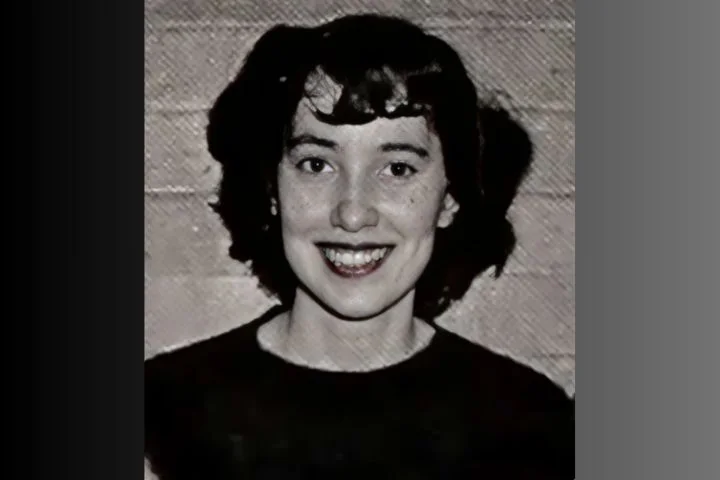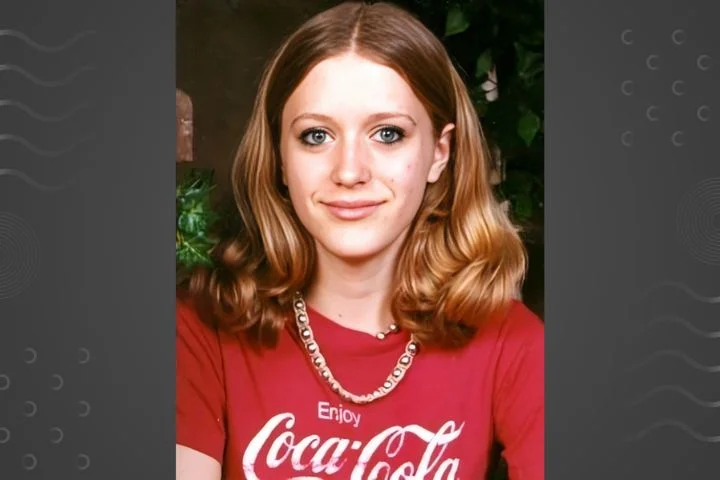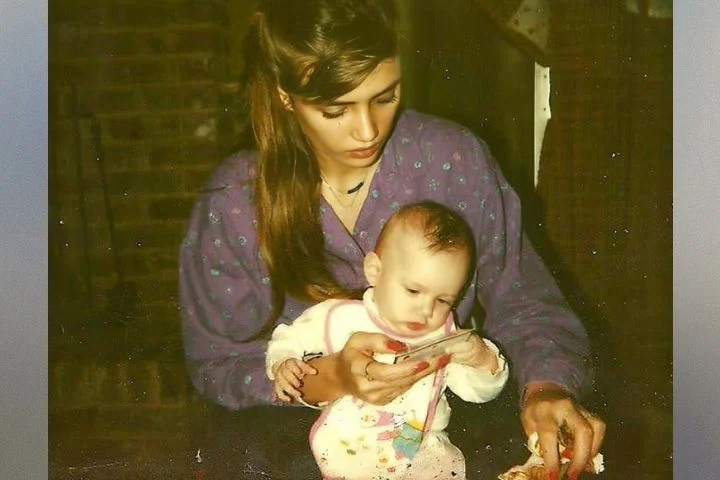Dr. Margaret Kilcoyne went to bed around 10:00 pm on Friday, January 25, 1980. Her brother, Leo Kilcoyne, was staying at her Nantucket, Massachusetts home for the weekend, and she asked him to make sure she was up by 6:00 am the next morning as she planned on attending an early mass at a nearby church. Leo agreed, then settled into a guest room adjacent to Margaret’s bedroom. Leo heard his sister’s alarm go off early the next morning, but when he went into her bedroom to make sure she was awake, he couldn’t find her. At some point overnight, the 50-year-old had disappeared.
It was bitterly cold when Margaret went missing, with temperatures well below freezing. Her car was still in the driveway, and Leo couldn’t imagine why she would have gone out walking in such weather. He searched around the house but didn’t see any kind of note indicating where his sister had gone. Her boots and coat, which she would normally wear when she went outside, were by the door. When there was still no sign of Margaret by 7:00 am, he called the Nantucket Police Department and reported her missing.
Margaret was a well-respected researcher and doctor who taught classes at Columbia’s medical school. She lived in New York and had bought the home on the island of Nantucket ten years earlier to use as a vacation home. She had come to the island several days earlier to enjoy some time off from work; she told her relatives that her research had resulted in what she described as a dramatic discovery that she was going to be announcing to the world in a few months. Margaret had been extremely excited about her discovery and planned to have a huge party to celebrate.
Margaret started her healthcare career as a registered nurse, graduating from the Boston Children’s Hospital School of Nursing in 1951. She then went to Boston University and completed a bachelor’s degree, then enrolled at the University of Vermont’s medical school. After her graduation from there in 1964, she completed her residency at Columbia Presbyterian Hospital.
After deciding that her main area of interest was hypertension, Margaret moved on to Harlem Hospital and became the director of their hypertension department in 1970. She remained there until 1973, when she took a position at Columbia University. In addition to teaching there, she conducted research on adolescent hypertension. She had published numerous papers on hypertension and was generally recognized as an expert on the subject. She was considered to be quite level-headed, and it was completely out of her character to voluntarily disappear.
Nantucket police found nothing unusual in Margaret’s house. Leo told them that he hadn’t heard anything out of the ordinary overnight, and investigators confirmed that there were no signs of forced entry into the home. Margaret’s bed was left unmade, suggesting she had gotten up and left the house in a hurry.
When asked what he thought happened to his sister, Leo told investigators that he was worried she had walked down to the ocean and drowned herself. Detectives weren’t so sure. They pointed out that the temperature overnight had been minus 35 degrees when the wind chill was factored in, and they didn’t believe Margaret could have made the mile-long walk to the ocean without a coat or shoes. The entire beachfront was extensively searched, but they found nothing to suggest that anyone had been on the frozen beach.
The island was serviced by both ferries and commercial flights; detectives checked all the passenger lists and determined that Margaret hadn’t left Nantucket via boat or commercial plane. There were several private planes that landed and took off after the small airport was closed for the night, however, and there were no passenger lists available for these flights.
Detectives and volunteers scoured the entire island of Nantucket, hoping to find some clues to Margaret’s whereabouts. They found nothing, and after several days, the search was called off. Investigators admitted that they had no idea what had happened to Margaret, but they were certain they would have found her if she had been anywhere on the small island.
There was little progress on the case until February 3, 1980, when four people who were walking their dogs around the island found Margaret’s sandals, passport, bank book, and a $100 bill about a mile away from her home. The items were neatly stacked in a clearing that had been searched thoroughly during the initial search effort, and investigators insisted that they had not been there at the time.
After Margaret’s belongings were found, detectives and volunteers conducted another massive search for the missing woman. They combed through wooded areas, scoured the beachfront, and checked inside unoccupied summer homes. Several helicopters and airplanes scanned the area from above, and divers cut through ice to search a nearby pond and around the perimeter of the island. Once again, they failed to find any clues about Margaret’s whereabouts.
Investigators interviewed everyone associated with Margaret, but none of them were able to shed any light on her disappearance. Richard and Grace Coffin, who owned a Nantucket gift shop, had dinner with Margaret and her brother the night before the doctor went missing. They told detectives that she had been in good spirits at the time and had excitedly told them that her research had led to what she believed was a huge medical breakthrough. Richard noted, “She was very elated about the whole thing — her discovery. The four of us joked a lot. She was far from depressed.”
Leo agreed that nothing had appeared to be wrong with his sister that night. “She was not depressed at all.” He hadn’t seen any warning signs that she was thinking about committing suicide. “There was never any indication she would ever do something like that. What happened to her is a complete mystery.”
Leo had traveled from Canada to visit his sister after she called him to tell him about her research discovery. “It was a very big discovery. She had found a way of isolating the causes of hypertension. I went down to Nantucket to see her because she was so elated, so excited about her breakthrough.”
Anticipating that more of her relatives would soon travel to Nantucket to see her, Margaret had gone grocery shopping the day before she went missing. She purchased $650 worth of food and spent another $250 on liquor, despite the fact that she herself rarely drank. Oddly, she purchased everything in multiples of three, and told the checkout clerk that she was going to have a huge party to celebrate her new discovery. She said that she planned to rent three houses so she would have somewhere for all her guests to stay, but there was no indication that she actually tried to do so.
Two weeks after Margaret was last seen, Nantucket police continued to conduct daily searches for her. Nantucket Police Capt. George Rezendes told reporters, “Every day there’s two or three people out there. We’re still checking the area.” Unfortunately, they were still unable to determine what had happened to Margaret.
On February 8, 1980, searchers found a brown blouse rolled up into a ball and seemingly hidden under a bush about 150 yards away from where Margaret’s passport and other belongings had been found. The blouse was the same size and brand as several other blouses found hanging in Margaret’s closet, leading police to believe that it belonged to her. Nantucket Police Chief Paul Hunter believed the blouse had been intentionally hidden there. “It was pretty obvious the blouse had been placed where we found it. It was rolled up and on the ground under scrub oaks, quite a mess of them. Capt. Rezendes had to crawl in to get it.” He had no idea why Margaret would have hidden her blouse. “Day by day, it’s getting more confusing.”
As word spread about Margaret’s disappearance, police heard from a number of people who believed they had seen the missing woman on the mainland, fueling speculation that she had somehow managed to get off the island of Nantucket. Two people were convinced they saw her in West Yarmouth; one man said she asked him for directions to Hyannis Airport and said she needed to get a flight back to Nantucket. The witness told police he was absolutely certain Margaret was the woman he spoke to, but added that she appeared to be somewhat confused.
Officials conducted another air search for Margaret on February 21, 1980. Capt. George Rezendes was confident that she was not going to be found on the island. “We had a damned good view. We could see rabbits and birds and a few patches of snow, but didn’t turn up anything [related to the search.]”
Chief Hunter admitted that when he first learned of Margaret’s disappearance, he feared the worst. “Until her belongings were found, I thought we had a typical case of suicide.” He changed his mind after interviewing many of Margaret’s associates. “We now think there is a strong possibility she is alive…maybe the things were placed there to throw us off the trail.”
Six weeks after Margaret vanished, Chief Hunter told reporters, “We have definitely eliminated mu*rder, kidnapping, any sort of foul play, and the evidence points very clearly away from suicide. In fact, it now points to a deliberate attempt to make believe it was a suicide.” He seemed to believe that at least one of Margaret’s relatives had helped her disappear. “We haven’t heard from her brother in weeks. If it was your sister, wouldn’t you be calling us all the time?”
Months passed, and there was no progress on the case. By the time Nantucket was flooded with tourists eager to spend their summer holidays on the beach, it seemed that much of the island had forgotten about Margaret’s disappearance. Although detectives continued to investigate each tip they received, they soon exhausted all leads and the case went cold. A year after Margaret vanished, they still had no idea what had happened to her. Chief Hunter, however, did not believe she had k*illed herself. “I think she’s alive. I’ve felt that way all along.”
On the second anniversary of his sister’s disappearance, Leo stated that he believed his sister had k*illed herself and nothing the police said could change his opinion. Chief Hunter told reporters that there was simply no evidence to support the suicide theory, especially if Margaret had been the person who left her belongings in the clearing where they were found. They were located a mile away from Margaret’s house in the opposite direction of the beach. He found it unrealistic to believe that Margaret had walked a mile through the woods, dumped her belongings, then backtracked over a mile and a half to reach the beach so she could throw herself into the ocean.
Chief Hunter admitted that the case had become an obsession for him. “There had not been one day in the last two years that I have not thought about it…she’s constantly on my mind.”
Years went by, and Margaret’s fate remained a mystery. In January 1989, the case made it back into the headlines after Leo filed a petition to have his sister declared legally d*ead so he could dispose of her $200,000 estate. In his petition, he noted, “None of Dr. Kilcoyne’s family or friends have heard from her. From all facts known, it is apparent that Dr. Kilcoyne is deceased and not voluntarily away from her family, friends, and associates.”
Investigators disagreed with Leo’s theory, pointing out that there were no footprints on the beach and nothing to suggest that Margaret had been suicidal. Chief Hunter stated, “I am convinced, as I have been all along, that she is not dea*d. I think she got off the island for some reason we do not know and is living somewhere else.” Nantucket Fire Chief Bruce Watts was blunt. “My feeling is that she’s still alive. I feel strongly that the whole thing is the biggest scam ever perpetuated on this town.”
In July 1989, a probate judge granted Leo’s petition and declared that Margaret was de*ad in the eyes of the law, closing a nearly decade-long investigation into her disappearance. Although many of the investigators believed that she was still alive, there was little they could do to prove their theory. Margaret’s true fate may never be known.
Dr. Margaret Mary Kilcoyne was 50 years old when she went missing from Nantucket, Massachusetts in January 1980. The circumstances surrounding her disappearance are murky and it’s unclear if she intended to harm herself or simply wanted to run away from her life and start fresh somewhere new. Margaret had red hair and blue eyes, and at the time of her disappearance, she was 5 feet tall and weighed 140 pounds. She was thought to be wearing only her nightclothes when she left the house, as her coat and shoes were left behind. Margaret was declared legally de*ad in 1989, but her body has never been found and some investigators believed she was still alive at the time. If you have any information about Margaret, please contact the Nantucket Police Department at 508–228–1212.






